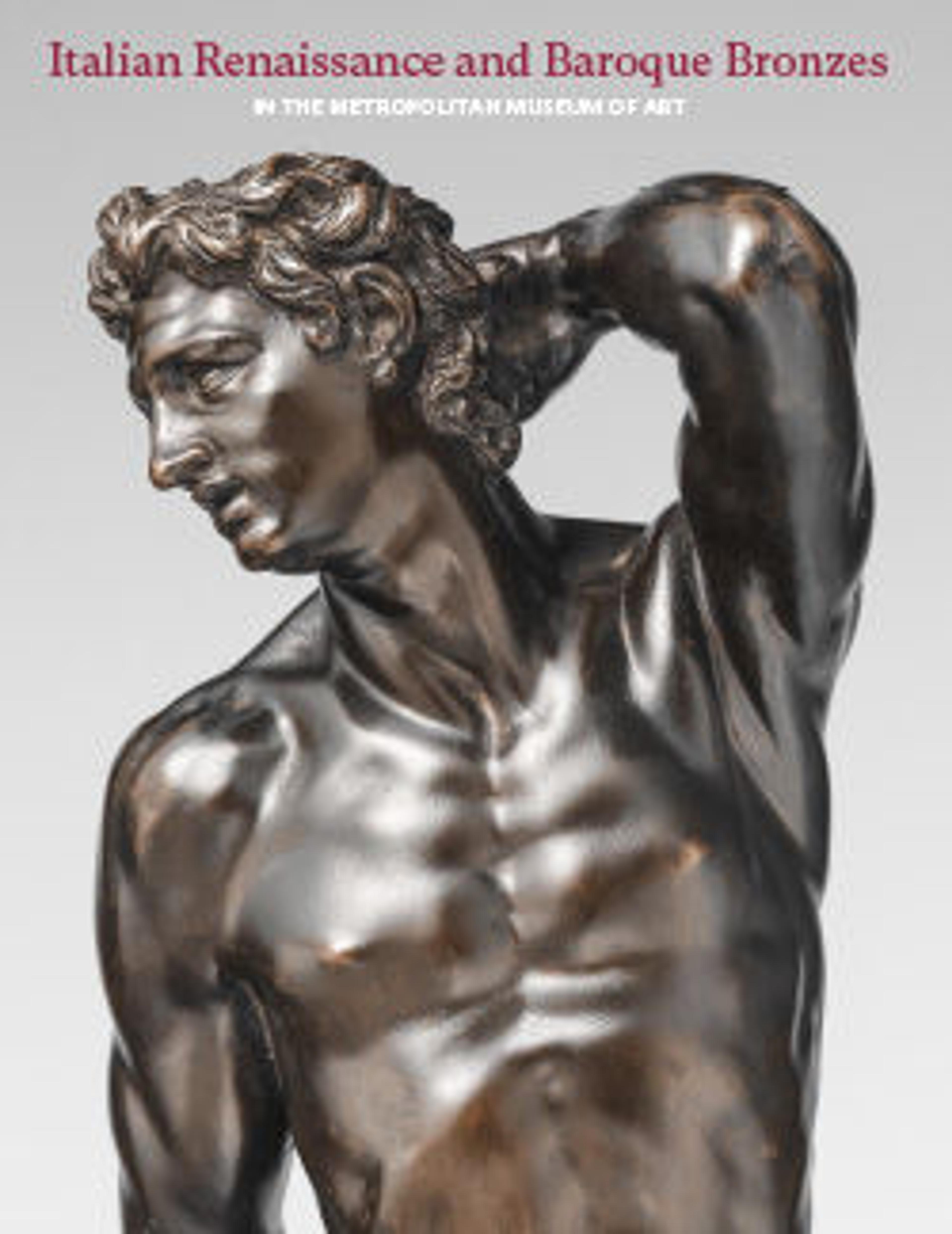Inkwell (one of a pair) surmounted by finial figure representing vigilance
No satisfactory stylistic or technical background has been suggested for these over-the-top vessels. They should rest firmly enough on their three clawed feet; why then is there a rather massive middle floral foot under the middle of each as well? The finials rise from their triangular stands above triangular basins whose bottoms are surrounded by thin copper plates soldered into place but not tightly enough to prevent leakage. One has hardly seen Renaissance basins of inkwells needing such big areas, and the casts are extremely porous. Finials and bowls are treated much alike, with small dot marks on the draperies of the former, broader ones on the lionskin-like wrappings of the sphinxlike creatures at the basins’ corners. All the female personifications have similarly flowing locks and heavily lidded eyes. History is identifiable by her scroll, Vigilance by her rooster, its head since lost. History’s head, broken and loose, was recently restored. It is unclear why she should have a dog beside her, but nothing about these vessels makes perfect sense: perhaps least of all that the statuettes should float like small islands in their big containers. Hardly successful in any period, it is astonishing that either one should have inspired a mate. Cumbersome and in every way odd, they find no satisfactory equivalents in Venice or its outposts. Cautionary instincts and curiosity have prevented their being deaccessioned, as well as the thought that they might serve a purpose in an exhibition about fanciful nineteenth-century views of the Renaissance.
-JDD
-JDD
Artwork Details
- Title: Inkwell (one of a pair) surmounted by finial figure representing vigilance
- Date: 17th century or later
- Culture: Possibly Northern Italian
- Medium: Bronze
- Dimensions: Overall (confirmed): 10 1/2 × 9 1/2 × 9 3/4 in. (26.7 × 24.1 × 24.8 cm)
- Classification: Sculpture-Bronze
- Credit Line: Gift of Irwin Untermyer, 1964
- Object Number: 64.101.1459
- Curatorial Department: European Sculpture and Decorative Arts
More Artwork
Research Resources
The Met provides unparalleled resources for research and welcomes an international community of students and scholars. The Met's Open Access API is where creators and researchers can connect to the The Met collection. Open Access data and public domain images are available for unrestricted commercial and noncommercial use without permission or fee.
To request images under copyright and other restrictions, please use this Image Request form.
Feedback
We continue to research and examine historical and cultural context for objects in The Met collection. If you have comments or questions about this object record, please contact us using the form below. The Museum looks forward to receiving your comments.
